– The Experiment that Will Blow Up the World (Acting Man, Oct 31, 2014):
The BoJ Goes Even Crazier
It has been clear for a while now that the lunatics are running the asylum in Japan, so perhaps one shouldn’t be too surprised by what happened overnight. Bloomberg informs us that “Kuroda Jolts Markets With Assault on Deflation Mindset”.
The policy hasn’t worked so far, in fact, it demonstrably hasn’t worked in Japan in a quarter of a century. Therefore, according to the Keynesian mindset, we need more of it. Mr. Kuroda therefore delivered a surprise spiking of the punchbowl that immediately impoverished Japan’s consumers further by causing a sharp decline in the yen:
“Today’s decision to expand Japan’s monetary stimulus may be regarded as shock treatment in the central bank’s effort to affect confidence levels. Bank of Japan Governor Haruhiko Kuroda’s remedy to reflate the world’s third-largest economy through influencing expectations saw the yen sliding and stocks climbing.
Kuroda led a divided board in Tokyo in a surprise decision to expand unprecedented monetary stimulus. Bank officials hadn’t provided any hints in recent weeks that additional easing was on the cards to help reach the BOJ’s inflation goal. Kuroda, 70, repeatedly indicated confidence this month that Japan was on a path to reaching his 2 percent target in the coming fiscal year. Just three of 32 economists surveyed by Bloomberg News predicted extra easing.
“We have to admit that this is sort of a second shock — after we had the first shock in April last year,” said Masaaki Kanno, chief Japan economist at JPMorgan Chase & Co. in Tokyo, referring to the first round of stimulus rolled out by Kuroda in 2013. Kanno, who used to work at the BOJ, said “this is very effective,” especially because it comes the same day as the government pension fund said it will buy more of the nation’s stocks.
(emphasis added)
So why is there allegedly a “need to combat the deflation mindset”? Below is a chart of the recent increases in Japan’s CPI.
In actual practice, it matters little how they have come about – the fact that CPI was inter alia boosted by a hike in consumption taxes does not alter the fact that every consumer in Japan is now getting fewer goods and services for his income and savings than before. No consumer is going to a shop and saying to himself “the fact that things are now vastly more expensive than before somehow shows we are still in deflation, because it has happened for transitory reasons”. All he knows is that he is getting less for his hard-earned money. Mr. Kuroda is evidently not moved by such considerations.
Japan’s CPI is recently growing at a 3.2% annual rate. Obviously, this means one must “combat the deflation mindset” – click to enlarge.
Bloomberg’s article continues along precisely these lines:
“A decline in demand following April’s sales-tax increase and the tumble in oil prices are putting downward pressure on prices in Japan. Today’s decision came hours after a government report showed that core inflation eased to the slowest pace in six months in September.
The 3 percent gain in core consumer prices — the BOJ’s main gauge — was just 1 percent with the effects of April’s sales-levy hike stripped out.
The BOJ today reduced its estimate for the core consumer price index, which excludes fresh food and increases to sales tax, to 1.7 percent for the fiscal year through March 2016, from 1.9 percent previously. The bank kept its forecast at 2.1 percent for the following year.
The central bank won’t hesitate to act again if needed, Kuroda said, pointing out there’s still room for additional measures. The BOJ acted as skeptical views mount over the effect of quantitative easing, according to Citigroup Inc. economists Kiichi Murashima and Naoki Iizuka. “If the impact of today’s action on the economy and prices proves limited, the impact on financial markets may also prove short-lived,” they wrote in an e-mailed note.
The above is a corollary to the recently heavily propagated idea that falling oil prices are somehow “bad” for oil consuming countries because they might lead to lower prices! You can read this nonsense in every statist rag, from the Financial Times to the Economist. If this doesn’t prove how utterly absurd the basis of today’s central bank policies is, nothing ever will. These people have taken complete leave of what was left of their senses.
Although it shouldn’t be necessary to say this, here is a reminder: rising stock prices are not “proof” that things are fine. If that were the yardstick by which to measure the “success” of central bank money printing, the best performing economies in the world would be those of Venezuela, Argentina and Iran.
BoJ credit, as represented by the asset side of its balance sheet. Still not enough! – click to enlarge.
Kuroda’s Policy Will End in A Catastrophe
In order to explain why the pursuit of Kuroda’s policy is edging ever closer to a catastrophic outcome, we have to delve a bit into the details of Japan’s monetary data. In spite of the BoJ’s “QE” reaching record highs, it mainly creates bank reserves and furthers carry trades. The economy sees no private credit growth so far.
Commercial banks in Japan continue to shrink the stock of fiduciary media – this is to say, they are reducing outstanding credit, which makes more and more unbacked deposit money disappear. Hence, Japan’s money supply growth has recently decline to a mere 4.3% year-on-year, as the rate of contraction in outstanding fiduciary media (i.e., uncovered money substitutes) has accelerated to 9.4 annualized in spite of the BoJ’s pumping.
The reason is a technical one: contrary to the Fed, the BoJ buys most of the securities it acquires in terms of its “QE” operations directly from banks – this creates new bank reserves at the BoJ, but no new deposit money. By contrast, the Fed buys only from primary dealers, which are legally non-banks (even though most of them belong to banks). This creates both bank reserves and deposit money concurrently. The BoJ’s actions can only directly inflate the money supply to the extent it buys securities from non-banks, e.g. when it buys stocks in REITs to prop up the Nikkei.
Below is a chart showing the annual growth rate of Japan’s narrow money supply M1, which is essentially equivalent to money TMS (it comprises demand deposits and currency).
Japan’s 12-month money supply growth has declined to 4.3%, in spite of the BoJ’s pumping – click to enlarge.
In short, the effectiveness of the BoJ’s pumping depends on the extent to which commercial banks are prepared to employ additional bank reserves to pyramid new credit atop them and thereby create additional fiduciary media. Japan’s banks are doing the exact opposite, mainly because there simply isn’t sufficient demand for credit. Why would anyone borrow more money, given Japan’s demographic situation?
However, one result of this is that an ever larger portion of Japan’s money supply actually consists of covered money substitutes – deposit money that is “backed” by standard money. Covered money substitutes have grown by more than 77% over the past year.
Bank reserves can be transformed into currency when customers withdraw cash from their deposits, hence to the extent that deposit money is “backed” by bank reserves, it ceases to be a form of circulation credit. The narrow money supply in total now amounts to roughly 595 trillion yen; of this, roughly 139 trillion yen consist covered money substitutes and 83.4 trillion yen consist of currency (outstanding banknotes in circulation). Thus the stock of fiduciary media has shrunk to 372.6 trillion yen.
Japan: currency plus demand deposits = M1 = true money supply – click to enlarge.
And yet, in spite of Japan’s money supply growing much slower than money supply in both the US and the euro area, the yen continues to implode:
The yen’s plunge is accelerating – click to enlarge.
The yen’s ongoing collapse suggests that Kuroda will eventually get his inflation wish, as import prices continue to rise. In fact, Japan recently regularly reports trade deficits, which is inter alia a result of the plunge in the yen’s external value. Currently, this is offset to some extent by the decline in commodity prices, but given that commodities are by now extremely cheap relative to financial assets such as stocks and bonds, it becomes ever more likely that this offset will eventually reverse.
An era of trade deficits has begun in Japan, concurrently with the decline in the yen – click to enlarge.
The question is though, why is the yen falling so much if Japan’s money supply isn’t expanding at a very strong rate? We believe the answer to this question is to be found in the following statistics:
Gross government debt to GDP – Japan is the undisputed public debt king of the developed world – click to enlarge.
It is well known that Japan has a very high public-debt-to GDP ratio. Even with the recent economic upswing, its budget deficit for the current year is projected to clock in at more than 7% of GDP – the latest in a string of huge annual deficits. What is less well known is the ratio of public debt to tax revenues, which is actually the more relevant datum:
Government debt relative to tax revenues – click to enlarge.
We conclude from this that the markets are pouncing on the yen because they are forward-looking: the BoJ is monetizing ever more government debt and this is expected to continue, because the public debtberg has become too large to be funded by any other means.
In spite of the relatively low money supply growth this debt monetization has produced so far, it also creates the perverse situation that an ever greater portion of the government’s outstanding stock of debt consists actually of debt the government literally “owes to itself”.
On the surface, this monetarist wizardry suggests that one can indeed “get something for nothing” – but that just isn’t true. Deep down, market participants know that it isn’t true – so even though they are celebrating the promise of more liquidity by sending Japanese stocks soaring, they are also creating a fault line – and that fault line is the external value of the yen.
Among the industrialized welfare states, Japan is the one that is closest to government bankruptcy. Even with interest rates at record lows, the proportion of debt growth that is caused by mounting debt servicing costs alone has begun to rise in recent years due to the sheer size of the public debt outstanding. In other words, the government is by now in a so-called “debt trap”.
It has only been able to avoid more grave repercussions so far because Japan has run a current account surplus for a long time, and and only very few foreign investors therefore own JGBs. Japan’s own state-owned financial institutions such as the Post Bank and the state-owned pension fund have invested a large part of the population’s savings predominantly in JGBs.
And yet, the seeming calm rests on what appears to be increasingly misplaced confidence. All that is needed to blow the entire scheme to smithereens is an event that leads to a cracking of this confidence. Once a critical mass of economic actors becomes convinced that the plan is indeed to “make the public debt disappear” by monetization, and given what markets have done so far, it seems increasingly likely that it is the yen that will crack first. However, the sign that the ship is actually capsizing will be when JGB values begin to plummet in spite of the BoJ’s buying of government debt.
The growing amount of bank reserves piling up as a corollary to the BoJ’s exploding holdings of JGBs are like tinder waiting for a spark to set it off. Since Japan’s financial institutions hold large amounts of JGBs as ‘risk free’ assets augmenting their capital, their solvency will come into doubt should JGBs begin to decline in value. This is likely to happen should the fall in the yen’s external value get out of control. In that event, large portion of the covered money substitutes sitting in accounts may actually be converted into currency by panicked depositors. Then Mr. Kuroda will be reminded of the old saying “be careful what you wish for”.
Conclusion:
Japan’s aging population needs rising prices like a hole in the head. The more “successful” Mr. Kuroda becomes in forcing prices up, the less money people will have to spend and invest. The economy will weaken, not strengthen, as a result. The advantages the export sector currently enjoys are paid for by the entire rest of the economy. moreover, even this advantage is fleeting. It only exists as long as domestic prices have not yet fully adjusted to the fall in the currency’s value.
If one could indeed debase oneself to prosperity, it would long ago have been demonstrated by someone. While money supply growth in Japan has remained tame so far, the “something for nothing” trick implied by the BoJ’s massive debt monetization scheme is destined to end in a catastrophe unless it is stopped in time. Once confidence actually falters, it will be too late.
Haruhiko Kuroda believes the economy is a machine, and he just needs to pull, the right levers.
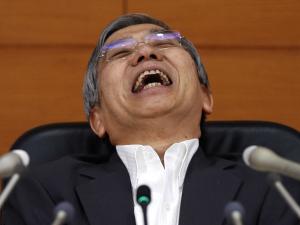
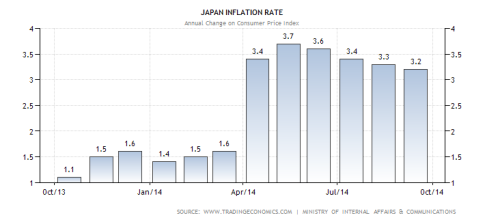
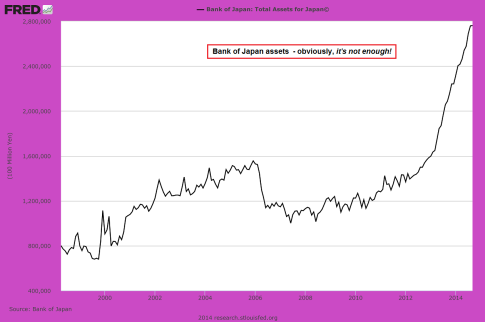
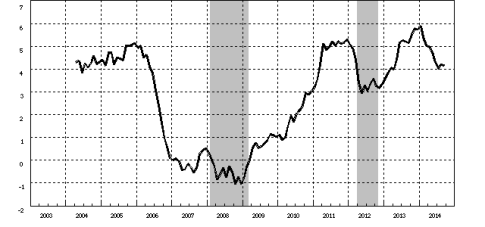
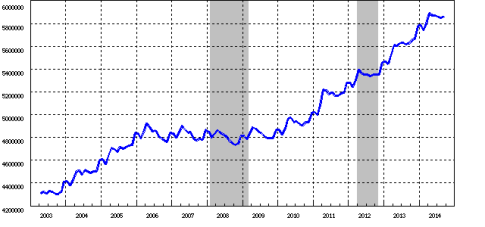
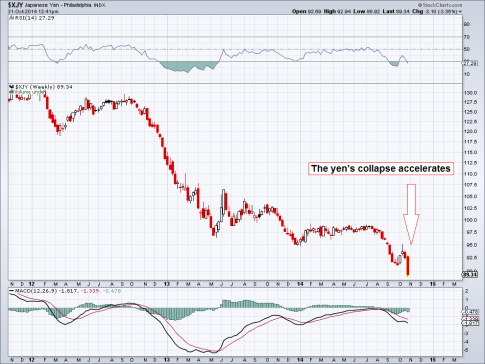
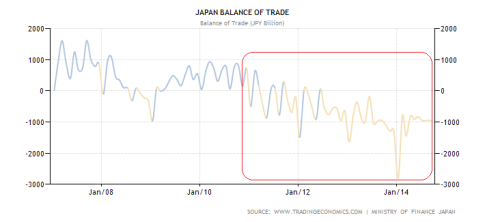

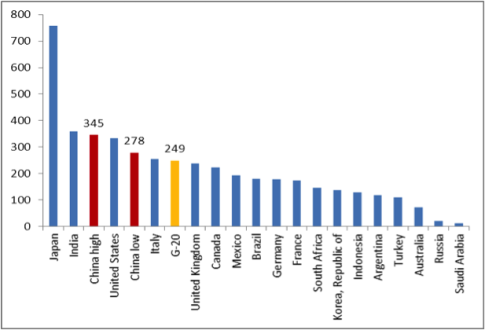
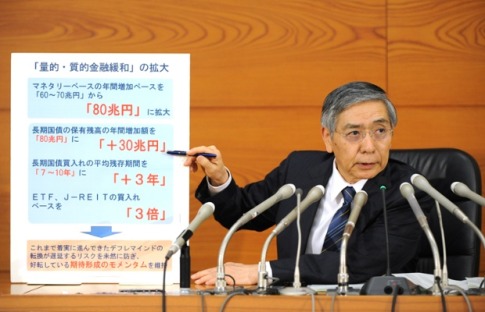
What an idiot. Does he want to destroy all money?